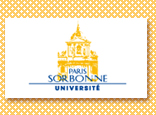 Representational
structures encoded images of cities, which they
mediated. The techniques used by artists conveyed
a vision of the city. Representational
structures encoded images of cities, which they
mediated. The techniques used by artists conveyed
a vision of the city.
 Hogarth's
views of London use techniques of spatial representation
where visual contrasts suggest social differences. Hogarth's
views of London use techniques of spatial representation
where visual contrasts suggest social differences.
 In
Gin Lane (a satirical view of the disasters
caused by the consumption of gin), he uses the spatial
separation between the background and the foreground
to underline the gap between the serene distance
and the disorderly foreground with people dying
of alcoholism. He has also drawn a distorted space
since the perspective lines do not converge towards
one vanishing point as they should do in strict
perspective In
Gin Lane (a satirical view of the disasters
caused by the consumption of gin), he uses the spatial
separation between the background and the foreground
to underline the gap between the serene distance
and the disorderly foreground with people dying
of alcoholism. He has also drawn a distorted space
since the perspective lines do not converge towards
one vanishing point as they should do in strict
perspective
 Visual
structures may be made apparent through interactivity
in websites Visual
structures may be made apparent through interactivity
in websites |
|
|
1) Searching
for images on the net: take the "google"
search engine and click on "images" above the
search box, then write "William Hogarth" in
the search box; the search engine will only retrieve the
websites on Hogarth which contain reproductions of his
works. You will find reproductions of Gin Lane
in frames 6, 9… in a different context each time,
usually in courses on the 18th c., such as http://duke.usask.ca/~jamescav/499syl.htm
2) Interpreting a URL:
after the university's address, the tilde ~ sign precedes
a proper name (that of Professor Katherine James-Cavan);
the tilde serves to introduce the URL of a section authored
by an individual placed on an institutional website (eg.
the course of a professor placed on the university website).
3) websites and interactivity:
you may alternate easily between two websites, eg. the
Duke University one and the CATI one, by making them both
available in the command bar below the screen: near the
closing box with an x at top right-hand corner, click
on the grey square with a horizontal dash in the lower
part; the website you are using will disappear from the
screen but its shortcut name will remain in the command
bar, where you only have to click to reopen it again.
You may have several websites easily available from the
task bar in this way.
|
|
|
http://duke.usask.ca/~jamescav/
http://www.cati.paris4.sorbonne.fr
(in "cours et séminaires ", take
"agrégation " then " image
analysis ", then " perspective "
"In Gin Lane two conflicting perspective
schemes regulate the middle distance in a criss-cross
pattern", with two horizon lines (the geometrical
construction is explained)

The simultaneous availability of websites allows
for comparisons, or for alternation between distinct
levels of interpretation of documents, eg: an art
website giving reproductions of paintings or engravings,
and a website on methods of image analysis showing
their geometrical structure. |
|



